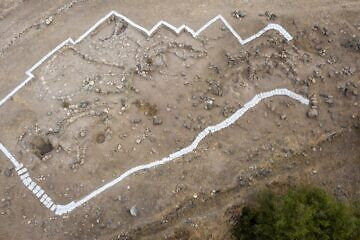A rare glimpse into the Natufian culture and the transition from a hunter-gatherer society to an agricultural one.
Etgar Lefkovits
(JNS)
A 12,000-year-old tool used to spin fibers into yarn has been identified in an archaeological dig in northern Israel, highlighting humanity’s prehistoric drive for innovation, the Hebrew University of Jerusalem announced on Wednesday.
The discovery of the ancient spindle whorls unearthed at Nahal Ein Gev in the Upper Jordan Valley, located at the middle of a stream that flows west to the Sea of Galilee, provides the earliest known evidence of fast-spinning technology in the Levant, predating previously known textile tools by 4,000 years, the university said.

Round, weighted objects that are attached to a spindle stick, spindle whorls form a similar wheel-and-axle-like device to help the spindle rotate faster and longer, enabling it to efficiently gather up fibers such as wool or flax and spin them into yarn.
The study, which was published in the peer reviewed PLOS One journal and is based on digital 3-D models of the stones, describes more than a hundred of the mostly limestone pebbles, which feature a circular shape perforated by a central hole.
“These perforated stones are actually the first wheels in form and function—a round object with a hole in the center connected to a rotating axle, used long before the appearance of the wheel for transportation purposes,” said Hebrew University Professor Leore Grosman.
This ancient spinning machines paved the way for future wheel-based rotational innovations that revolutionized human technological history such as the potter’s wheel and the cart wheel that appears 6,000 years ago, the study found.
The Nahal Ein Gev II site with its permanent structures, lime-plastered burials and diversified tools, provides a rare glimpse into the end of the Natufian culture, which dates back to 15,000 to 11,500 years ago and the transition from a hunter-gatherer society to an agricultural one.
Image: The Nahal Ein Gev II site, 1.25 miles east of the Sea of Galilee. Naftali Hilger/The Institute of Archaeology/The Hebrew University.


